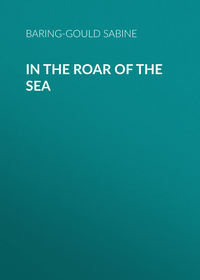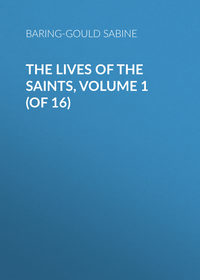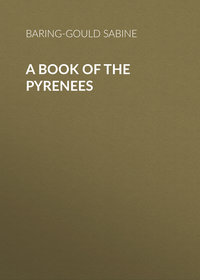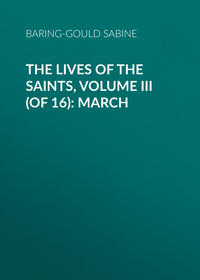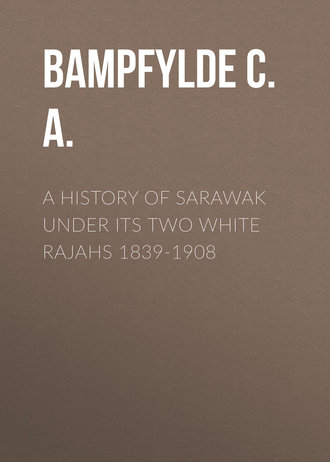 полная версия
полная версияA History of Sarawak under Its Two White Rajahs 1839-1908
The year 1858 was marked by a great revival of Lanun and Balagnini piracy. Among others, a Spanish vessel was taken in the Sulu seas by Panglima Taupan of Tawi-Tawi: a young girl, the daughter of a Spanish merchant, was the only one on board not massacred. Taupan took her for a wife; and, as I wrote at the time, – "Alas for the chivalry of the British Navy! Sir – , who was present when this information was given, said it was a Spanish affair, not ours." Another fruit of the Commission – officers dared not act.271
No more terrible fate can be conceived than that to which this poor girl, who had witnessed the murder of her father, was dragged, but had a British man-of-war been present it is doubtful whether her Commander would have interfered, unless he were prepared to sacrifice duty to compassion. For, after the notorious Commission, the Admiralty had issued stringent commands that unless a vessel should have, within view, attacked some British vessel or subject, or that there was proof that she had done so, she was not to be molested. It was a revival of the former order of 1844, which, though it contained the same strict limit, allowed some latitude to a Commander.
The Rajah was rightly of opinion that
These orders are a direct violation of our treaties with Holland and with Bruni.272 Such a course of action with pirates has never been pursued before by any civilised nation, and is manifestly calculated to destroy our commerce, wherever it may be practically acted upon. Let either the Lanun or Chinese pirates know that we shall not molest them unless they commit depredations on the English flag, and they would sweep away a million of commerce on these seas, which was bound to English markets in native bottoms.
Though the inhabitants and commerce of neighbouring countries continued to suffer, up to 1861 the pirates gave Sarawak a wide berth. Then they began to appear on the coast again, but the little Sarawak gunboats were on the alert. The principal object of the pirates was not to fight, but to obtain plunder and captives, and they afforded the gunboats only a few long shots. Still they managed to capture a few people, including some natives of Madras, British subjects. But in 1862 they were out in increased numbers.
In that year Captain Brooke, the Rajah Muda, met with a great loss, his second wife died at Kuching, after having given birth to her first child.273 This occurred on May 6, and after a few days it was thought by his friends that he might find some mental relief in change of scene and active work. Accordingly he was persuaded to undertake a voyage to Bintulu, and Bishop McDougall volunteered to accompany him so as to cheer and support him. Mr. Helms, agent of the Borneo Company, joined the party and was dropped at Muka. On the second day after the arrival of Mr. Helms, and when the Rajah Muda had left in the Rainbow, a piratical fleet of Lanuns, consisting of six large and many small vessels, appeared off the mouth of the Muka river and blockaded the place. For a couple of days they remained there, making excursions on land, and capturing thirty-two persons. Mr. Helms despatched a party of natives in a fast boat that succeeded in eluding the pirates, though they narrowly escaped capture, to make known the state of affairs to the Rajah Muda, and they found him still at Bintulu.
On May 25, the little screw-steamer Rainbow, carrying two 9-pounder guns, steamed out of Bintulu, and at once engaged a detachment of three Lanun prahus, one of which was sunk, and another captured; the third was engaged by the Jolly Bachelor and driven on the rocks off Kedurong point, and her crew taking refuge ashore were hunted down and killed by the Bintulu people. Learning from the captives the direction taken by the remainder of the fleet, the Rajah Muda stood out to sea in search of them.
After an hour or so, wrote the Bishop, the look-out at the mast-head reported three vessels in sight, right ahead. At this time it was quite calm, and when we came near enough to see them from the deck, we saw them sweep up to the central vessel and lay themselves side by side, with their bows at us, as if they meant to engage us in that position. However, as we went on towards them the sea-breeze sprang up, so they changed their tactics, and opened out in line with their broadsides towards us to rake us as we came up. Our plan was, as before, to shake them first and run them down in detail. Brooke did not give the order to fire until we came within 250 yards of them, and they opened their lelahs (brass swivel-guns) upon us some time before we commenced firing. They fired briskly and did not attempt to get away, even when we got all our guns to bear upon them; but as we steamed round to get our stem fairly at the sternmost vessel, they seemed to think we were retreating, and pelted us with shot more sharply than ever, directing their chief attention to us on the poop, where we had one man killed and two severely wounded in no time, and we should have suffered more if the temporary bulwark of planks, etc., had not stopped their balls.
After the first prahu was run down, I had to go below to attend to our own wounded as they came in, but I plainly felt the concussion as we went into the others. One of the vessels was cut right in two; the steamer went straight on without backing, and she sank the other, one half on each side of us. She was the largest, and had a valuable cargo, and much gold and bags of Dutch rupees. The pirates fought to the last, and then would not surrender, but jumped into the sea with their arms; and the poor captives, who were all made fast below as we came up to engage them, were doubtless glad when our stem opened the sides of their ships and thus let them out of their prison. Few, comparatively, were drowned, being mostly all good swimmers. All those who were not lashed to the vessels or killed by the Illanuns escaped. Our decks were soon covered with those we picked up, men of every race and nation in the Archipelago,274 who had been captured by the pirates in their cruise. One poor Chinese came swimming alongside, waving his tail over his head, and the other captives held up the cords round their necks to show they were slaves, lest they should be mistaken for Illanuns and shot or left to their fate. We soon picked up the poor fellows, and the Chinaman came under my hands, being shot through the arm. Many of the pirates we took were badly wounded, some mortally, the greater part were killed or disabled by our fire before we closed.
It is a marvel how these poor creatures live at all under the terrible tortures and ill-treatment they endure, sometimes for months, before they reach their destination and settle down as slaves to the worst of masters – very demons, not men. The captives state that when the pirates take a vessel, they kill every one who makes any resistance, plunder and sink their boats or ships, and when those they spare are first taken on board their own prahus, they put a rattan, or black rope-halter, round their necks, beat them with a flat piece of bamboo on the elbows and knees and the muscles of the arms and legs, so that they cannot use them to swim or run away. After a while, when sufficiently tamed, they are put to the sweeps and made to row in gangs, with one of their fellow-captives as a mandore or foreman over them, who is furnished with a rattan to keep them at their work; and if he does not do this effectually, he is "krissed" and thrown overboard, and another man put in his place. If any of the rowers jump overboard, the pirates have a supply of three-pronged and barbed spears, with long bamboo handles, ready to throw at them. When hit by one of these they can neither swim nor run, and are easily recaptured. They are made to row in relays night and day, and to keep them awake they put cayenne pepper in their eyes or cut them with their knives and put pepper in their wounds.
We found, on reckoning up, that we had picked up 165 people, and that 150 to 200 men had got to land from the vessels we sank near the shore. In every pirate vessel there were forty or or fifty Illanuns, fighting men, all well armed, each having a rifle or musket besides his native weapons, and from 60 to 70 captives, many of whom were killed by the pirates when they found themselves beaten; among them two women. Seven of the women and four of the children were our own Muka people275 and it was indeed most touching to witness the joy and gratitude of them and their relations when we returned them to their friends. Of the Illanuns we captured 32, ten of them boys. Some have died since of their wounds, the remainder are in irons in the fort here. The boys have been given out by Brooke for five years to respectable people to train and bring up. Very few of the pirates live to tell the tale; some captives assured us in the boat they were in there were only two out of the forty fighting-men who had not been killed or wounded by our fire, when we gave them the stem and cut them down.
Under the present system at Labuan, and the difficulties thrown in the way of our men-of-war against attacking these wretches when they are known to be in the neighbourhood, England with all her power and philanthropy is doing absolutely nothing towards putting an end to this abominable and most extensive system of rapine, murder, and slavery. It is impossible to estimate the destruction and the havoc, the murder and the amount of slave-dealing carried on by these wretches in their yearly cruises. The prahus we met were but one of the many squadrons that leave Sulu every year. Seven months had these wretches been devastating the villages on the coast, capturing slaves, taking and sinking trading vessels. Their course was along the coasts of Celebes, down the Macassar Straits to Madura and then along the Northern coast of Java, and the South of Borneo, up the Caramata passage to Borneo, to go home by Sarawak and Labuan. The other five pirate vessels parted company from them to go over to Balliton276 and Banca Straits, and doubtless they too will carry their depredations right up into the Straits of Singapore and pick up English subjects and injure English trade, as those we met have done. But apart from all our local feelings, and danger from these people, it makes an Englishman out here ashamed to feel that his own dear country, which we would fain regard as the liberator of the slave and the avenger of the wronged, is in truth doing nothing against the system, fraught with incalculable misery to so large a section of the human race. For it must be remembered that the slavery these people suffer is far more crushing to them than the African who is taken as a savage to serve civilised and at least, nominally, Christian masters; but these are generally well-to-do men of civilised nations who are made the slaves of utter fiends, who work and torture them to death one year, only to replace them by fresh victims whom they capture the next. It is indeed vae victis with them, and I think it is the duty of every Christian man and every Christian nation to do all that can be done to rid the earth of such horrible and dangerous monsters, and to punish the Sultan of Sulu and all who abet and aid them. The Dutch and Spaniards are always doing something, but not enough, and during the last four or five years, these pirate fleets have been gradually getting more and more numerous and daring on these coasts, and now it is for England to rouse herself and complete the work of putting them down. Labuan is near their haunts and it might be done from thence. A few thousands spent out here yearly for the purpose would, I believe in my heart, soon effect more real and lasting good than the millions which are being spent on the coast of Africa. All honour is due to Sir James Brooke and his nephew, the Rajah Muda, and the other officers of the Sarawak government, who in spite of misrepresentation and factious opposition, through evil report and good report, have persevered for years in constant, steady, and systematic efforts to put down piracy on this coast and chastise these villainous marauders whenever they come into Sarawak waters. If the English government will now act with and assist us, we shall soon clear the Sarawak and Labuan waters of these pests. Assisted by the knowledge and experience of our natives, the work would be done surely and effectually; but single-handed the Sarawak government notwithstanding all it has done, cannot carry it out. We want means; if England or Englishmen will give us that, we shall gladly do the work, and feel that we are delivering our fellow-men, and doing our duty to God, who has commanded us to free the captive and deliver the oppressed. While at the same time we shall be averting a danger which is ever threatening us at our own doors, and has so long crippled the energies and resources of this country.
The original fleet of Lanuns had consisted of eleven prahus, but off the western coast of Borneo five had parted company and stayed behind to cruise around Banka and Belitong. Shortly afterwards one of her Majesty's ships fell in with three of them and attempted to take them, but the pirates managed to effect their escape.
On board the little steamer were at the time eight Europeans, the stalwart Pangiran Matusin, a fighting haji, and fifteen natives. But though the pirates were far more numerous, and were all well armed, yet the steamer had the preponderating advantage of her screw, enabling her to ram each native vessel, cut her in half and send her to the bottom, so that there could not be doubt for a moment what would be the outcome of such a conflict.
The results of the fight were these: —

The prisoners, with the exception of the lads, were all executed. The lads were put to work on the gunboats, and became excellent and trustworthy sailors – one, who was the son of a Lanun of rank, subsequently commanded the present Rajah's former yacht the Aline. Some of the captives were Dutch subjects, and some were British subjects from Singapore. In the captured pirate prahu there were found five Dutch and one Spanish ensign.
Sailing along past the delta of the Rejang, when off the pretty little village of Palo, which was hidden from their view, the pirates had observed a long canoe laden with nipah palm leaves, with a man in the stern and a woman in the bows, paddling for dear life to escape. A light canoe manned by half-a-dozen men was at once despatched in chase, and quickly overhauled the poor couple, the man crying out that he surrendered, and the woman screaming with fear. It was a pretty example of the biter bit – a neatly contrived trap. Gliding alongside to secure their apparently helpless captives, without troubling to exchange paddles for weapons, to their amazement the pirates saw an upheaval of the leaves and several armed men spring up, together with the steersman and the disguised man in the bows. This startling development took the pirates so completely by surprise that they were all speared before they could seize their weapons. The Melanaus then quickly disappeared up a creek. Their leader was the late Atoh, a young man then, who afterwards became the Government chief of Palo. He is perhaps better known to the present generation as Haji Abdul Rahman.
The following translation of a paper written by a Nakoda Amzah, one of the rescued captives, and found amongst his papers after his death, gives a good account of the voyage of this fleet, and of its destruction. He was a Kampar (Sumatra) Malay, who lived in Sarawak since his rescue. He, his grandson, and another Malay were killed in the Rejang in 1880 by a head-hunting party of Dayaks. He was noted for his courage. He had been twice before captured by pirates. In this translation the word "pirate" is substituted for Bajau, Lanun, and Balanini, which the writer uses indiscriminately, and no doubt the crews of the piratical prahus were an admixture of these tribes.
Thursday, the 17th day of the month Sawal in the year of the Hejira 1278 (A.D. 1862). On this day Nakoda Amzah who was on a voyage to Samarang, with a crew of twelve men, was attacked off the mouth of the Jali by piratical prahus. These must have been eleven in all; they afterwards separated, six going along the coast of Borneo, and five coasting to Bangka. The attack was sudden, and they did their best to beat the pirates off, but after having fought them for about an hour, three of Nakoda Amzah's men were killed, and he himself was wounded in the head by a bullet. They then surrendered and were captured by the pirates; their own prahu was destroyed, and they were transferred to the pirates' prahus. The pirates then sailed to Pulo Kelam, where they hauled their prahus up a creek out of sight, there being a Dutch war vessel out of Benjarmasin on the look out for piratical prahus. This vessel steamed round the island without detecting them. They stayed here three days, and on the fourth launched their prahus and sailed northwards. The next day they again saw the steamer to the westward, so bore down to the island of Jempodi, where they stayed in hiding for six days. Sailing on, between Pakar and Kaiong the pirates captured a sampan with five men, and they also captured a woman. In two days more they reached the mouth of Katapang, and Kandang Krabu, where they made an unsuccessful raid; but they captured two men who were out fishing. Two days afterwards they arrived at and attacked Pulo Kumbang, but the people were away inland, so no captures were effected. The next day they made a descent on Sati point, and captured three Chinese and three Malays. They sailed on for two days more, and then tried at Mas Tiga, but did not succeed in capturing any one. Two days afterwards they fell in with a Dutch Government coastguard, commanded by one Rasip. They engaged the coastguard, but owing to a strong westerly wind were forced to leave her. After four days, between Karamata and Pulo Datu, they fell in with a Sambas prahu belonging to Haji Bakir, she proved to be from Belitong, loaded with dry fish, sago, etc. The pirates captured her and her crew of five men. The whole of the next day they were chased by a war steamer, but they escaped by keeping in shoal water, and by night falling. Five days afterwards, off Cape Baiong, they fell in with Nakoda Daud's prahu from Sambas, but did not molest her. Three days later they had passed Cape Datu, and brought up for two days in Serabang bay and read the Ruah Selamat.277 A three days' sail brought them to Cape Sirik, just before reaching which they fell in with two prahus which they attacked but were beaten off; they also chased a small boat but that escaped inshore. The next night at Bruit they killed two Melanaus, and captured two men and two women. Two nights after, off the mouth of Oya, they captured four Melanau women and two men. At Muka, which they reached next day, they captured four Chinese and two Melanaus, and the next night they brought up off Bintulu.278 The following day was a fatal day for the pirates, for in the morning a steamer (the Rainbow) came out of Bintulu accompanied by a pinnace (the Jolly Bachelor). There was a pirate prahu lying close in shore and upon her the steamer immediately fired; twice the steamer fired and then the prahu's crew ran her into shoal water, she was followed and attacked by the pinnace, and her crew then escaped ashore, but were all killed by men from Bintulu and Miri. The steamer then attacked another prahu – and after firing into her twice rammed and sank her. Her crew were all drowned, killed, or captured, and the captives, about twenty in number, escaped on board the steamer. A similar fate overtook a third prahu, all her crew perishing, and her captives, about twenty-five in number, were rescued by the steamer. The steamer then gave chase to the three prahus in the offing and overtook them. These three prahus were lashed together, but separated after being fired into. A short engagement ensued, which resulted in all three of the prahus being sunk, and their crews being killed or captured. Twenty-one captives were rescued from their prahus. And thus were the pirates destroyed off Bintulu by the Rajah of Sarawak's steamer the Rainbow.
Moreover it is estimated that the pirates lost forty men killed, and the steamer lost but one man killed and one wounded. And thus Nakoda Amzah and three of his men were rescued, and reached Kuching in safety. The remaining six were taken away in the other five prahus that sailed to Belitong and Bangka, and were probably taken by their captors to Sulu during the month of Haji.
Written in Kuching on Friday the 6th day of Dulkaidah, 1278 of the Hejira (A.D. 1862).
This was a lesson the pirates never forgot. From one of their prahus nineteen men escaped in a fast boat to carry the tale back with them, soon to spread to all the pirate haunts. Only once since, some seven years later, did the pirates venture down to the Sarawak coast, and then in no great force. They were attacked in Kedurong bay, and slain to a man by the Bintulu people led by their own chiefs. No more pirates were seen on the Sarawak coast afterwards.
The next year a squadron of steamers was sent from China to attack and root out all these pirates; but they came for no end except to sport their bunting, for nothing was effected. They could have had no intelligence officer with them with a knowledge of the positions of the piratical strongholds, and acquainted with the languages, habits, and appearance of the inhabitants of the northern coast of Borneo and the Sulu archipelago.
Though the pirates never troubled Sarawak again, they continued their operations in other parts for many years afterwards. As late as 1872, Dutch squadrons had to be sent out against them along the east coast of Borneo. And in 1874 piracy was so rife in the Sulu seas, and the Spanish gunboats so unable to suppress it, that the Governor-General of the Philippines issued an edict dooming the "Moorish marine" to destruction. The Spanish cruisers were to destroy all prahus proceeding from the Sulu islands or Tawi Tawi. Their crews were to be conveyed to Manila to labour on public works, and those found armed were to be punished by the Military Courts. It was hoped that these untameable and seafaring races would be thus compelled to live by agricultural pursuits alone. This merciless condemnation of peaceable traders and voyagers as well as the evil-doers naturally led to gross injustice, and to intense hatred of the Spaniards. Even those not bearing arms, engaged in peaceful pursuits, if apprehended, were doomed to compulsory labour; whereas those found armed, met with short shrift – and all were compelled to be armed for their own protection.
In 1879, the pirates of Tungku, a place near Sandakan, the last stronghold of the Balanini and Lanun pirates in northern Borneo, made several excursions along the coast capturing as many as 200 people. Then the place was destroyed by H.M.S. Kestrel. (It had been attacked before by the Cleopatra in 1851.) Shortly afterwards the British North Borneo Company established their government in North Borneo, and piracy virtually ceased along the coasts of Borneo.
CHAPTER X
THE KAYAN EXPEDITION
Early in 1863, the Rajah was again obliged to leave for Sarawak, owing to certain complications having arisen, due to the acts of his nephew, the Rajah Muda.
Into this matter it is not our intention to enter at length. It has already been dealt with fully in both Miss Jacob's and Sir Spencer St. John's biographies of the Rajah, and it is sufficient to say here that it was mainly the result of an inexplicable misconception of the policy being pursued by the Rajah in England.
The formal recognition of Sarawak was the sole proposal before the British Government. It is true the Rajah trusted that having once gained this England would not leave Sarawak to her fate in the event of the failure of his Government; but he wrote: "On every account of feeling of pride, of attachment to the people, I desire the Government to be continued." The negotiations had not extended to any overtures for a transfer, or proposals of protection. Recognition at this time was all important, not only to give a status to the Government, and confidence to the people, but to encourage the introduction of capital, without which the country could not advance.
It was against the mistaken idea of a transfer of the country to England that the Rajah Muda protested. Yet a short time before he himself had suggested such a transfer to Belgium, and, a few years previously that the country should be sold either to England or to the Borneo Company.


